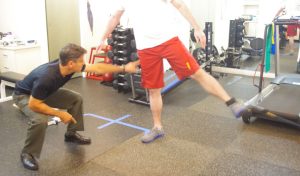By Nancy Simpkins

What do quarterback Tom Brady, downhill skier Lindsey Vonn, shooting guard Klay Thompson and soccer player Megan Rapinoe have in common? They have all torn an anterior cruciate ligament (ACL).
What is the ACL?
The ACL connects the tibia (shin bone) to the femur (thigh bone). A tear in this ligament can make the knee joint unstable or prone to giving way. Sudden, pivoting movements become difficult, and arthritis is more likely to develop.
How do you tear your ACL?
Many ACL tears happen after someone lands from a jump, changes direction rapidly, or suffers a blow to the knee. ACL tears are common in basketball, football, soccer and skiing.
 Women are more susceptible to ACL tears than men are, which may be due to anatomical differences and the effects of hormones on ligaments. Another factor is that women tend to use a more upright posture than men. Athletes who use a crouching posture are less likely to suffer ACL injuries. The ACL also weakens with age, and is more likely to tear in athletes over 40.
Women are more susceptible to ACL tears than men are, which may be due to anatomical differences and the effects of hormones on ligaments. Another factor is that women tend to use a more upright posture than men. Athletes who use a crouching posture are less likely to suffer ACL injuries. The ACL also weakens with age, and is more likely to tear in athletes over 40.
Symptoms and treatment of ACL tears
Symptoms of an ACL tear include a popping sound, sudden instability of the knee, pain and swelling. Initial treatment includes ice, and it’s important to keep weight off the knee to prevent further damage. If an athlete wants to continue in a high-impact sport, an ACL tear usually requires surgery, followed by physical therapy to strengthen the muscles surrounding the knee. For the knee to function in normal daily activities, physical therapy alone may be sufficient.